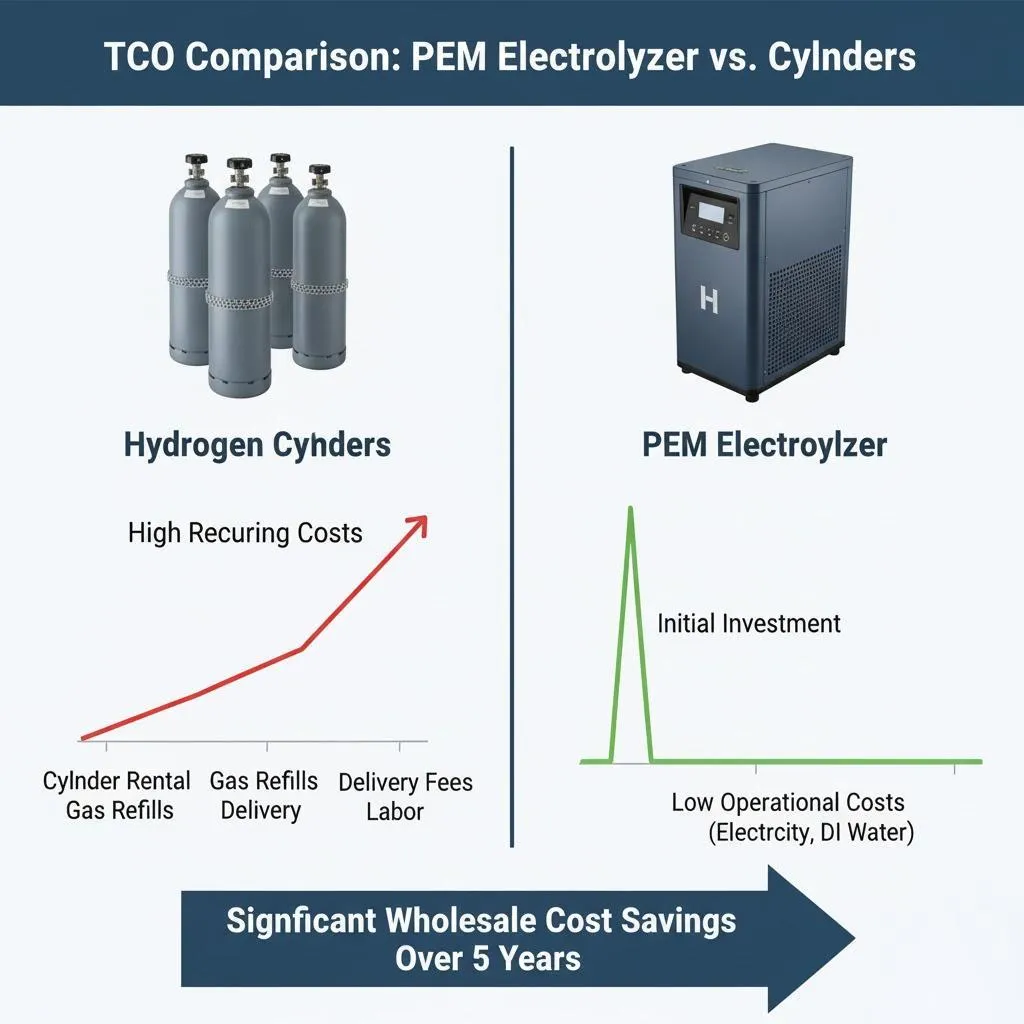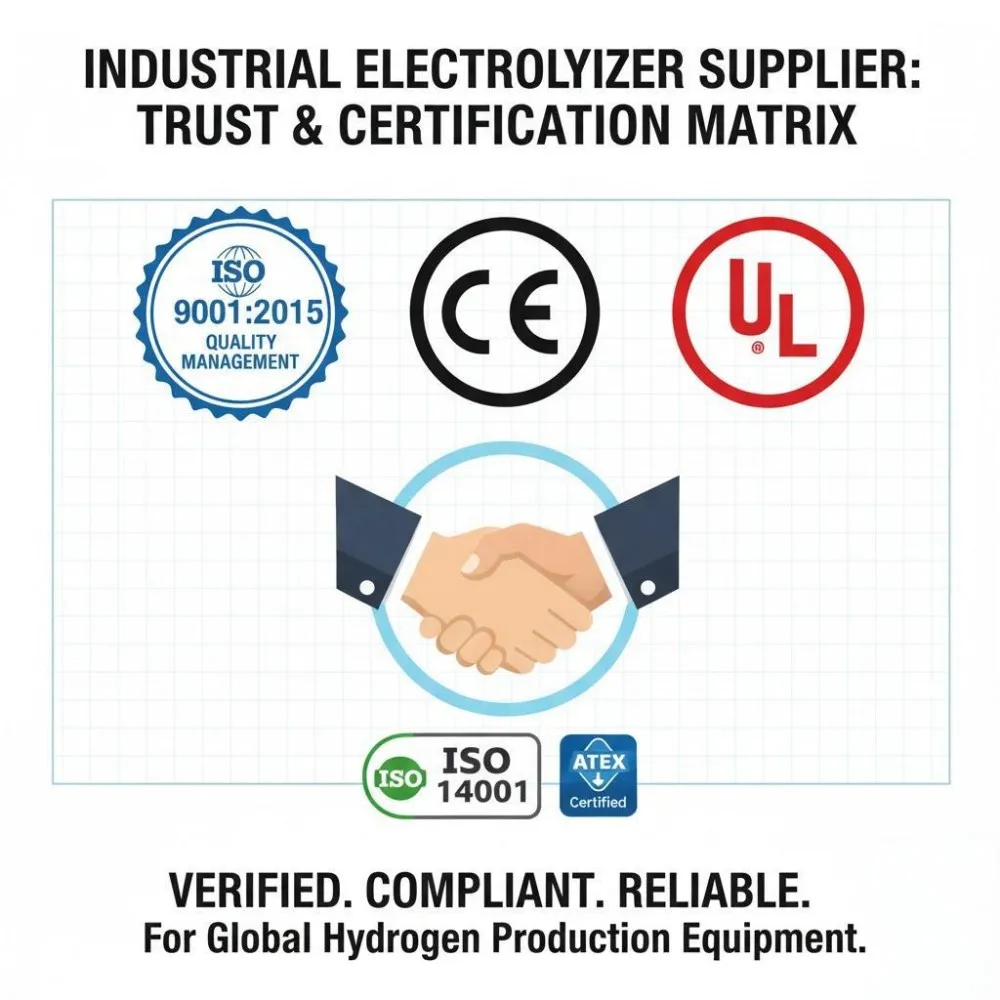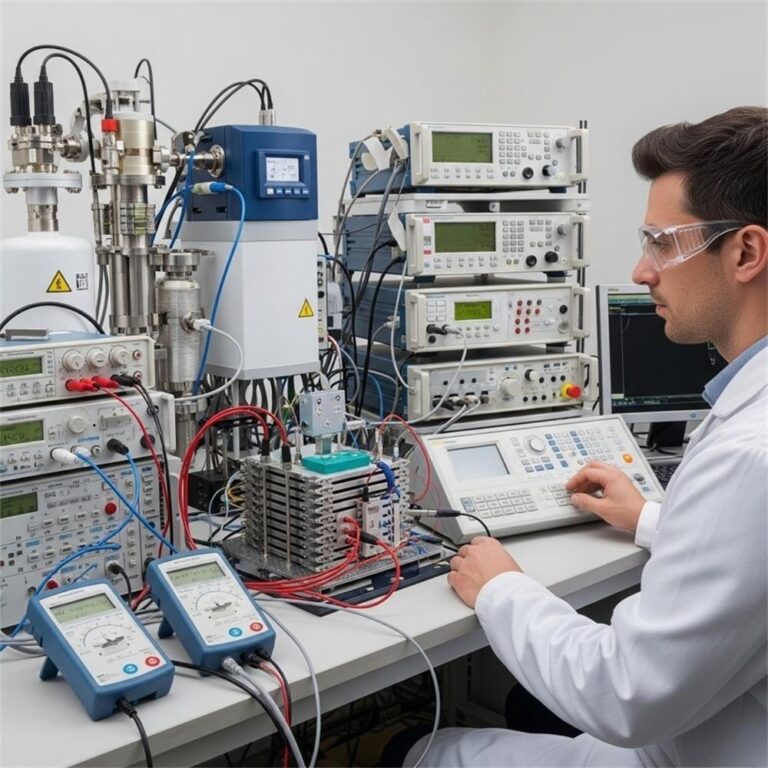Learn the working principle of high-performance PEM electrolyzers, their advantages for industrial hydrogen production, and key selection criteria for B2B buyers. Get expert insights.
Introduction to PEM Electrolysis Technology
What Is Proton Exchange Membrane (PEM) Electrolysis?
Proton Exchange Membrane (PEM) electrolysis is an advanced electrochemical process that splits water into hydrogen and oxygen using electricity. Central to this technology is the PEM—an ion-conductive membrane that selectively allows protons to pass while blocking gases and electrons. This enables efficient, clean hydrogen generation without fossil fuels.

The Rise of Green Hydrogen in 2025
With the global green hydrogen market projected to surpass $60 billion by 2030, demand for scalable, clean hydrogen technologies is surging. PEM electrolyzers are front and center due to their fast response times and integration compatibility with renewables like wind and solar.
PEM vs. Alkaline and Solid Oxide Electrolyzers
| Feature | PEM Electrolyzer | Alkaline Electrolyzer | Solid Oxide Electrolyzer |
|---|---|---|---|
| Operating Temp | 50–80°C | 60–90°C | 600–1000°C |
| Startup Time | <1 minute | ~10 minutes | >30 minutes |
| Hydrogen Purity | Very high | Moderate | High |
| Load Response | Excellent | Moderate | Poor |
| System Size | Compact | Bulky | Moderate |
PEM systems offer a superior blend of speed, efficiency, and scalability, making them ideal for industrial hydrogen production.
Core Components of an HPEM Electrolyzer
1. Membrane Electrode Assembly (MEA)
The MEA is the heart of PEM electrolyzer stack design. It includes:
- Catalyst-coated membrane: Usually platinum-based
- Gas diffusion layers (GDLs): Promote gas flow and distribute water evenly
- Ionomer: Facilitates proton conductivity
2. Bipolar Plates and Flow Fields
Bipolar plates manage the flow of gases and fluids. Made from coated metals or graphite composites, they:
- Channel water and gases efficiently
- Conduct electrical current
- Provide mechanical support
3. Current Collectors and Gaskets
These ensure secure electrical connections and gas-tight seals, enabling safe and reliable operation.
4. Advanced Materials for Industrial Systems
Newer HPEM systems utilize:
- Corrosion-resistant alloys
- Enhanced polymer membranes
- Heat-resistant composites
These improve durability and performance in high-demand industrial settings.
The HPEM Electrolyzer Working Principle (Step-by-Step)
1. Water Decomposition at the Anode
Reaction: 2H₂O → O₂ + 4H⁺ + 4e⁻ Water is fed into the anode chamber, where an applied voltage splits it into oxygen gas, protons (H⁺), and electrons.
2. Proton Transport Through the PEM
The PEM membrane selectively allows only protons to pass through to the cathode side, while blocking electrons and gases.
3. Hydrogen Generation at the Cathode
Reaction: 4H⁺ + 4e⁻ → 2H₂ Electrons from the external circuit and protons recombine at the cathode to form high-purity hydrogen gas.
4. Gas Separation and Purification
Integrated gas management systems ensure:
- Efficient O₂ and H₂ separation
- Removal of water vapor
- Delivery of fuel-cell-grade hydrogen
Key Performance Advantages for Industrial Applications
1. Higher Efficiency (75–85%)
HPEM systems outperform many alternatives with low power consumption per Nm³ of H₂.
2. Rapid Load Response
Ideal for fluctuating inputs from solar PV or wind farms, with dynamic ramping and shutoff.
3. Modular and Compact
Space-saving design enables stackable units for scalable deployment—from 100 Nm³/h to multi-MW plants.
4. Minimal Maintenance
No corrosive alkaline liquids and fewer mechanical parts lead to lower OPEX and longer system uptime.
Technical Specifications Buyers Should Evaluate
1. Current Density
Measured in A/cm². Higher densities indicate greater output per cell but may impact lifespan.
2. Hydrogen Production Capacity
Common ranges:
- Small: 1–10 Nm³/h
- Medium: 50–100 Nm³/h
- Large: >500 Nm³/h
3. Stack Lifetime and Degradation
Modern PEM stacks last 60,000–80,000 hours, depending on operating conditions.
4. Balance of Plant (BoP) Requirements
BoP includes:
- Power electronics
- Water purification units
- Thermal management
- Gas dryers and sensors
Latest Technological Advancements (2025 Updates)
1. New Membranes
Fluorine-free and ultra-thin membranes reduce costs and environmental impact.
2. High-Pressure Operation
Some systems now operate directly at up to 100 bar, eliminating post-compression steps.
3. Integrated Power Electronics
Advanced inverters and rectifiers enhance system efficiency and grid responsiveness.
4. Smart Monitoring
IoT and AI-powered analytics help optimize:
- Energy consumption
- Predictive maintenance
- Safety protocols
Industrial Application Case Studies
1. Renewable Hydrogen Megaprojects
Countries like Germany and Australia are scaling up PEM electrolyzer plants >100 MW to feed green hydrogen pipelines.
2. Industrial Energy Storage
PEM systems buffer excess renewable energy in steel plants and chemical factories by converting it to storable hydrogen.
3. Hydrogen for Transportation
HPEM electrolyzers produce clean H₂ for:
- Fuel-cell buses
- Trucks
- Rail and marine fleets
Frequently Asked Questions (FAQs)
Q1: What’s the lifespan of a PEM electrolyzer stack?
Modern stacks typically last 60,000–80,000 hours, depending on usage and conditions.
Q2: Is PEM electrolysis suitable for off-grid renewable systems?
Yes. Their fast startup and flexible load response make them ideal for pairing with solar and wind sources.
Q3: How pure is the hydrogen produced?
PEM electrolyzers can deliver >99.99% purity, suitable for fuel cells and industrial uses.
Q4: Are PEM systems safe to operate?
Absolutely. Built-in sensors, automated shutoff, and leak detection ensure safe and reliable performance.
Q5: What influences the cost of an HPEM system?
Major factors include:
- Stack size and material
- Pressure output
- Required BoP components
- Operating environment
Conclusion
High-performance PEM electrolyzers are a cornerstone of modern industrial hydrogen production. Their exceptional efficiency, rapid responsiveness, and scalable modularity make them the top choice for companies transitioning to green energy. With continuous innovation and global adoption, PEM electrolysis is shaping the future of clean fuel generation.
Call to Action
Need help selecting the right PEM electrolyzer for your industrial hydrogen needs? Our engineering team specializes in matching commercial buyers with optimal electrolysis solutions. Contact us for a free technical consultation and quote.







